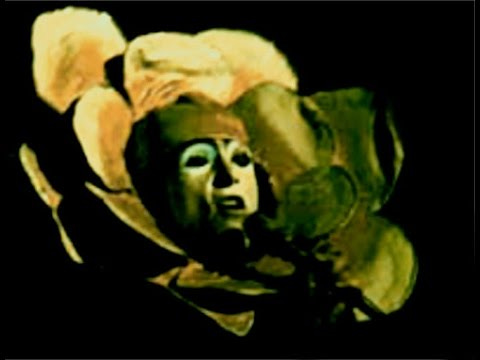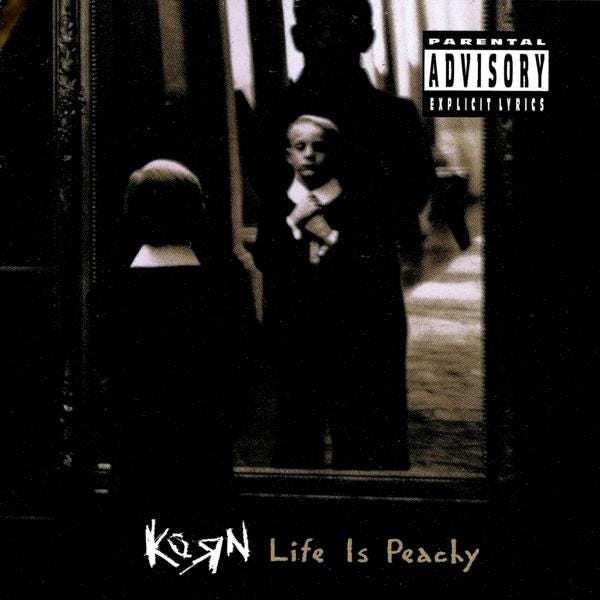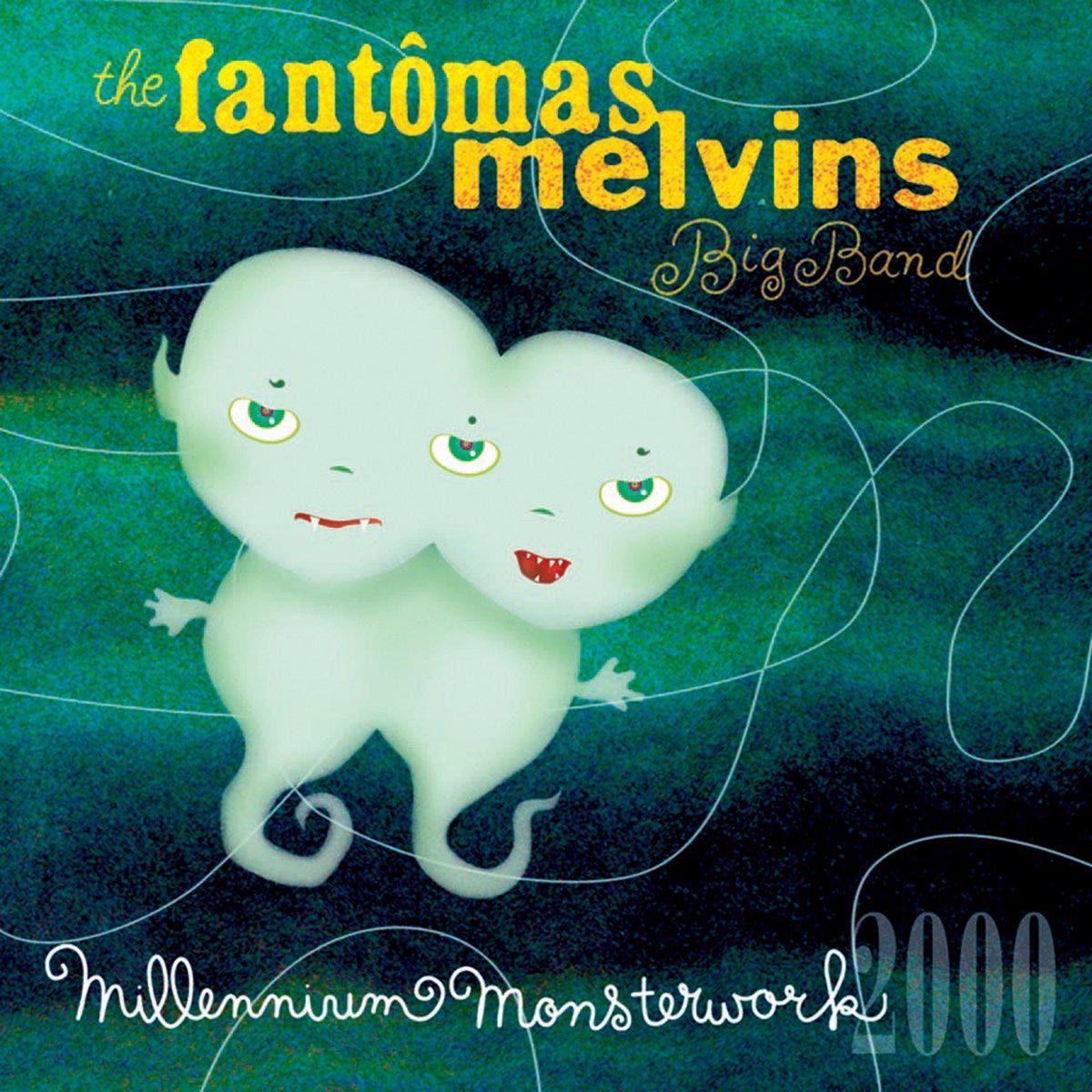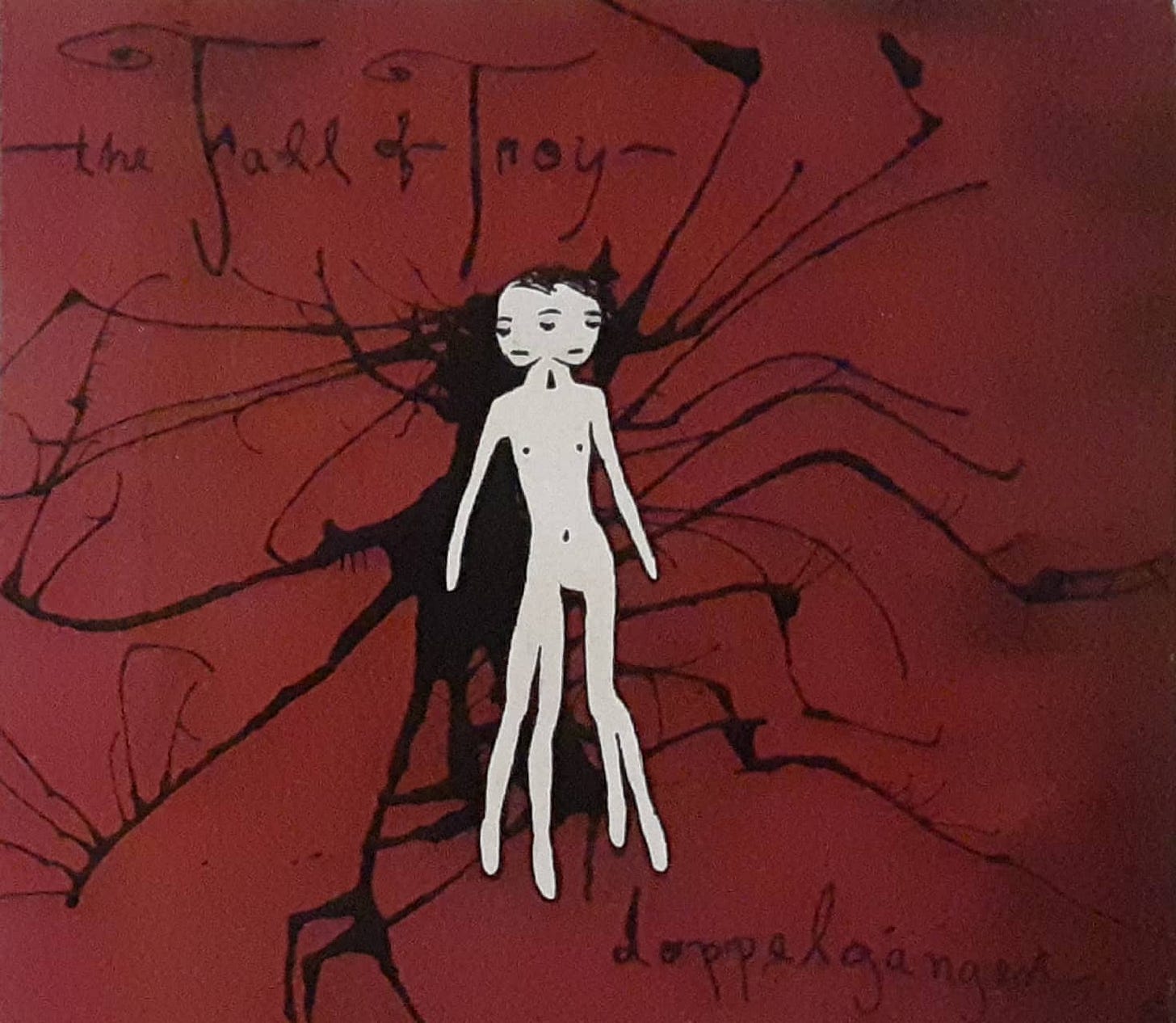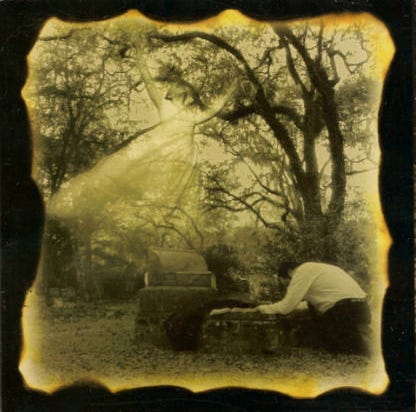Last week, after months (years?) of throat-clearing, I outlined the first principles of Progmatism, a new critical framework that I’ve devised to lead us out of the last gasps of the poptimist era. My first entry focused on the pragmatic end of the portmanteau, using the philosophy of Richard Rorty to puncture and let some of the air out of the rockism vs poptimism binary that’s defined the critical conversation for twenty odd years. Today I’d like to focus on the prog side of the equation.
What is prog? To most readers this four letter homophone for the capital of the Czech Republic calls to mind the genre progressive rock. If these readers were cursed with a particularly devious curiosity as a teen they may think of progressive metal. I don’t know if ravers use “prog” as a short hand for progressive house, maybe the nightlifers can chime in in the comments. Prog is at least as old as the 1970s and has accrued a plethora of meanings in the meantime. Still, the image I expect most people to form in their mind’s eye when I bring up prog involves balding Brits in frilly shirts and capes, playing for too long on too much equipment to an enraptured audience of dorks. I’m not going to dispute the accuracy of this notion, and I’ll make a case for even the dorkiest extremes of prog eventually, but for now I’d encourage you to take an open-minded and, well, pragmatic view of the word.
What is a genre, anyway? Is it a measurement of specific musical elements like tempo, key, time signature, or instrumentation? That approach works in electronic and classical music, at least to a point. Is genre an aesthetic agreement held between members of a self-identifying (and often counter-cultural) community of fans like punk or hip-hop? Or, in this late stage of capitalism, is a genre just a marketing tool and prog just a particularly long-lasting brand of gum? To the pragmatist, and thus to the progmatist, all of these explanations hold at least some weight. A comprehensive map of any genre would resemble an I-Hop-shaming stack of Venn diagrams more than the strict borders drawn by colonial surveyors. The only diagram I can make out clearly is the one that I lay at the top of the stack myself, so that’s the one I want to focus on today.
To me prog is both its history and its untapped potential, a mode of working and a method for invention. The history begins with the British progressive rock bands of the 1970s like King Crimson, Genesis, Yes, and Gentle Giant. It continues with the bands that took that scene’s emphasis on long, complicated songs, outrageous technical facility, and theatrical presentation and ran with it. This history spans the globe, on either side of the Iron Curtain and on both sides of the equator, and stretches all the way to the present day. Drop a needle anywhere in the last 60 years and you’ll find a band ripping through odd time signatures, often with a mellotron or moog. Prog as a historical form persisted after the 70s with bands like Rush, IQ, and Marillion. It rode the backs of suped-up metal bands like Dream Theater or Queensryche into the 90s and emo adjacent acts like The Mars Volta and Coheed & Cambria into the 21st century. Today you can see historical prog’s influence in indie bands like Glass Beach and the New British Weirdness of Black Midi, Black Country New Road, Squid, and English Teacher.
Given our current post-modern malaise, none of these moments have ever truly passed. You can always find prog bands who look and act as if it’s still 1972, or prog metal bands pretending its still 1993. This presents the amateur musicologist with a tricky paradox. How can a genre named after progress find itself repeating the past so often? If you ask yourself this question there’s a good chance you view prog as a method and its name a command to constantly push yourself and your music forward. Many of the original prog rockers agreed, quickly leaving the genre’s symphonic pretensions behind to experiment synth-pop, new wave, and having lots of money. If you are a prog-as-method person your definition of the genre probably includes avant-garde fringes like Zeuhl and Zolo, other consciously boundary pushing movements like kraut rock, post-punk and post-rock, or similarly technically minded styles like math rock and djent. But why stop there? Why not include the whole of art pop by dint of Kate Bush’s early connection to Pink Floyd and Peter Gabriel? Why not include the parallel history of jazz fusion, the technical excess of salsa, or the sweeping formal experiments of soul artists like Marvin Gaye, Isaac Hayes, and Maurice White, and Stevie Wonder?
It is precisely the tension between these two conceptions of Prog that makes Progmatism so rich with potential. From one side we have a devotion to history, a tradition of technical excellence, and a stubborn commitment to doing your thing despite the whims of the present moment. From the other side we have a relentless desire to innovate, to never get comfortable with repeating yourself, and the fearlessness to splinter off from past into untrod territory. Between these dueling poles the genre has room for tyrannical band leaders and communitarian collectives, extreme self-seriousness and a playful sense of humor. There is no singular dominant mode, in the spirit of its namesake’s extravagance the Progmatist dares to posses both the past and the future at once.
Next week, I’ll finish up this series on Progmatism with an appropriately grandiose conclusion. Until then, thank you for reading!
~ ~ ~ ~ ~ Listening Diary ~ ~ ~ ~ ~
Here are five songs that I enjoyed listening to recently! You can find a Spotify playlist with all of this year’s tracks here, updated with a new song every Monday-Friday.
“No Downtime” by Ka (Grief Pedigree, 2012)
RIP to Ka, the resolutely independent rapper from Brownsville Brooklyn. I’ve always been a little intimidated by the density of Ka’s work but since his passing I’ve been diving into his back catalog. First off, how cool is it that Ka made his own beats, directed his own videos, and sold his own records straight out of his trunk? DIY king. This track jumped out to me because unlike his later “drumless” style, this beat has a real bounce to it. Squint and you can almost see how Ka could have been a conventionally successful rapper. The lyrics are obviously excellent. New York Formalism forever.
“Babys In A Thundercloud” by Godspeed You! Black Emperor (“NO TITLE AS OF 13 FEBRUARY 2024 28340 DEAD”, 2024)
This album is great because Godspeed have stood firm on their commitments, politically and musically. Anyone surprised that a band who spell Canada with a “k” come down firmly on the pro-Palestine side of things needs remedial media literacy classes ASAP. I doubt instrumental polemics are going to change the minds of ghouls fantasizing about Starbucks on the West Bank, but for the rest of us with a functional moral compass this track gives you a chance to sit, think, and feel for 13 uninterrupted minutes. I can’t promise that you’ll feel better on the other side.
“The Message [Tablet II]” by Blood Incantation (Absolute Elsewhere, 2024)
Hard to pick the best stretch from this sprawling two-sider, but here is perhaps the clearest expression of Absolute Elsewhere’s thesis. The twisted-up death metal is our gruesome reality, the yearning, open-hearted prog rock is the alien world calling from beyond the stars. I’m not saying that I’m a true believer in the existence of little green men, but I can’t pretend that Blood Incantation haven’t made their gravity bong vision of the universe very compelling on this record!
“Flipping” by Candy (Flipping, 2024)
They change the tempo eight times over three and a half minutes and the song gets better each and every time. Do the (well timed) turntable scratches immediately make this a nü-metal song, or has the genre been so thoroughly rehabilitated that anyone can do that move without question now? Preaching to the choir, playing to the mosh pit, piquing the appetite of dry-wall installers nationwide.
“Through a War” by Geordie Greep (The New Sound, 2024)
At the time of writing, Geordie Greep’s The New Sound sits sandwiched between Steely Dan’s Aja and Jorge Ben’s A Tábua de Esmeralda on Rate Your Music’s all time charts. Though the charts may change by the time you read this letter, this current placement triangulates where the former Black Midi frontman’s freedom has taken him; an airport bar on a layover halfway between London and Rio, half in the bag, arms already exhausted and suit jacket drenched with sweat. He came to Brazil, he saw my rough draft of favorite olds albums of the year (apparently), and conquered my draft of favorite new albums of the year.
\ \ \ \ \ Micro Reviews / / / / /
Here are five micro reviews from my high school and college collection of burnt CDs. Long time Lamniformes Instagram followers will recognize these from my stories back in 2021, however they’ve been re-edited and spruced up with links so that you can actually hear the music instead of just taking my word for it.
Life is Peachy by Korn (1996) - Nü-Metal
You get the sense that Korn slapped this one together to capitalize on their growing hype. The production is rough, there are two covers, two different songs about writer’s block, and a goofy instrumental jam meant to sound like a porn soundtrack. The rawness is what makes it good. Unnecessary anger toward Mr. Rogers aside, this is a fun/intense listen. The breakdown on “Good God” is the most hair raising shit this band ever wrote. And who could hate on “Twist”? Not Korn’s best, but on the better side of their discography.
Millennium Monsterwork 2000 by The Fantômas Melvins Big Band (2002) - Art Metal
A live recording of the members of Fantômas and Melvins playing as a single group (one guitar, two basses, two drummers, and one Mike Patton). The material is evenly split between the two bands. Sounds like shit, to be honest. I bet seeing it live would be pretty cool, but this recording doesn’t capture how insanely loud Melvins are in person. I would rather listen to Fantômas on their own, and I imagine Melvins fans feel the same way.
Act of Depression by Underoath (1999) - Metalcore
The debut album from the Florida post-hardcore band, long before they became popular. I remember meeting older dudes in the 00s who sweared that the early Underoath stuff was legit good and way heavier than the sing-song-y emo stuff that made them so popular with my age cohort. The older guys were 50% right. This is much heavier, clearly drawing from 90s metallic hardcore bands like Zao, Converge, etc. Lots of emphasis on breakdowns, trem-picking and blast beats, with none of the catchy choruses that would make their career later. This is not, however, legit good. Leaving aside the gross, self-righteous, pro-life lyrics (the band would tone down their evangelical approach into a softer, vaguer form of Christianity in lockstep with the sanding down of their musical edge) these songs just frankly ain’t that good. Long, rambling, and hookless. For a bunch of teens it’s well performed, but the material does not hold up. Don’t let people convince you the old stuff is better just because its different.
Doppelgänger by The Fall of Troy (2005) - Post-Hardcore
If I were being mean I’d say that this is what you order at the post-hardcore restaurant when The Mars Volta is too spicy for you, but in truth I liked this a lot! I dismissed this back in high school when I was snobbier about vocal tone, which is silly because these instrumental performances are so good that I should have been able to get over it. I mean, damn, these drums sound great! Great arranging for power trio here that, while obviously showy, never loses track of the songs. Lots of tasty turnarounds and subtle riff developments. I could tell they knew what they were doing when the obligatory single “F.C.P.R.E.M.I.X.” still rocked. The stranglehold that House of Leaves had on the lyrics of mid-00s post-hardcore records deserves closer examination. Good album!
Cries of the Past by Underoath (2000) - Metalcore
Ah, now I see that this is what the old heads were talking about when they praised early Underoath. This is a huge step up in just about every way. The playing is tighter, the songs go places, and the production cleaner and has a few clever tricks to keep each song distinct. Clearly someone in the band started listening to a lot more European metal between the debut and this release. You can hear the Swedish melo-death influence that was endemic to the metalcore scene in this era, but also (and this might just be the keyboard talking) bits of Katatonia style death doom and Cradle of Filth style black metal. Is this album a hidden classic? Not quite, but it does represent an interesting evolutionary dead-end for the hardcore scene that wouldn’t get its due until nearly a decade later when Abigail Williams and the deathcore movement really took off. Weird that Underoath pivoted so hard into mall-emo after this album, but I doubt their accountants are complaining. Neat!

